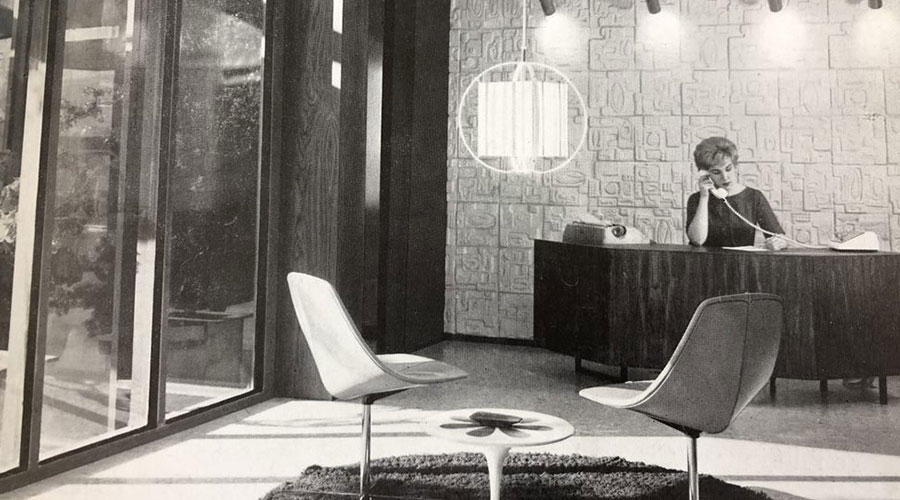Planning: The heart of automated external defibrillator programs
Approximately 350,000 Americans die each year from sudden cardiac arrest. It strikes people of all ages with little or no warning, even those individuals with no known heart problems. While it is more common in adults, sudden cardiac arrest does not discriminate against the young. And when it strikes, time becomes critical. Without treatment in the minutes immediately following cardiac arrest, the chances for survival decrease dramatically. For each minute that passes, the chances for survival decrease by 7 to 10 percent.
Although there are a number of different conditions that lead to cardiac arrest, the most common is ventricular fibrillation. Ventricular fibrillation occurs when the heart’s normal rhythm becomes chaotic, preventing the heart from pumping blood. Its most effective treatment is the use of a defibrillator to deliver an electric shock to the heart, allowing a normal rhythm to be restored.
Despite the effectiveness of defibrillators in restoring normal heart activity, survival rates, historically, are low. For one thing, traditional defibrillators were not widely available. Those that were in place were expensive to purchase and maintain. They required extensive training to be used. As a result, their availability was limited primarily to hospitals and other health care facilities, where the survival rates for victims of sudden cardiac arrest cases were high for those already in those facilities.
Advances in computer technology have led to the development of small, portable defibrillator units that can greatly increase the survival rates for victims of sudden cardiac arrest. About the size of a laptop computer and costing approximately $3,000 each, automated external defibrillators (AEDs) are small enough and inexpensive enough to allow them to be moved out of the medical facility, closer to the locations where sudden cardiac arrest strikes its victims. And their ease of use has made it possible to train thousands of non-medical personnel in their use.
AEDs, like traditional defibrillators, are used to administer an electric shock to the heart through the chest. Self-adhesive, electrically conductive pads are attached to the chest of a person in apparent cardiac arrest. The AED’s built-in computer checks the patient’s heart rhythm, determines if defibrillation is needed, charges itself to a preset level, then notifies the operator to administer the shock. After the shock is administered, the AED checks the patient’s heart rhythm to determine if it has been restored or if additional shocks are required. Throughout the process, audio and visual prompts guide the user Although training is essential for proper AED use, AEDs have been used successfully by people who never received training.
In fact, AEDs are so effective that they are being used every day to help save lives. Emergency service personnel are being equipped with the units. A large number of schools and public facilities have AEDs installed and available to emergency-response personnel. Airlines are installing the units and training flight attendants in their use. Now, they are making their way into office and commercial facilities.
Despite the simplicity of the AED, it is not enough to purchase and install units in a facility. Units must be properly placed where they will do the most good. Personnel must be trained in their use. Units must be maintained. And because AEDs are still a prescription device, the entire program must be supervised by a physician. So before rushing out to purchase AED equipment, facility executives must carefully develop an implementation program that evaluates the need, provides several levels of training and continues the maintenance of the units.
Establishing An AED Program
One of the first steps in developing an AED program is to seek medical direction. The purchase and installation of AEDs requires a prescription from a physician. But more than just meeting the requirement of writing the prescription and authorizing the use of the AED, a physician can provide medical direction to the program. The physician can participate in quality assurance and program reviews in addition to reviewing the content and effectiveness of training programs. Physicians can also make recommendations as to how the AED program can be more effectively made part of a facility’s overall safety program.
One of the most important steps in implementing an AED program is to conduct a site assessment. To be effective, AED units must be strategically located. The goal of the site assessment is to place the units where they can be accessed and taken to any victim anywhere in the facility in less than three minutes.
To determine that spot, walk through the entire facility. Identify areas where building occupants and visitors are located on both a regular and an infrequent basis. Office areas, warehouse spaces and public areas must be included in the site assessment. Time how long it would take to retrieve a unit from potential AED storage sites to these areas under the occupancy conditions normally found in the facility. When units are installed, all locations must be clearly identified and accessible.
Recruit volunteers to serve as responders in medical emergencies. The responders must be available during the times when the facility is occupied and must be located throughout the facility, including all areas where the units are likely to be located.
Simply training all people located in a single area will not meet the requirements of the program. The volunteers must receive training in the use of AED equipment. Training programs are widely available through the Red Cross, the American Heart Association and a number of state agencies. Most training programs run between three and four hours and require periodic recurrent sessions. Training programs go beyond the AED equipment to include CPR training. The use of an AED does not eliminate the need for CPR. CPR is required until the AED unit arrives on the scene and when the unit gives a no-shock advisory, when three consecutive shocks fail to restore normal heart rhythm or if the AED unit fails. All training must be documented and tracked by the program administrator.
Maintaining an AED Program
Another important task in establishing the program is to assign someone the responsibility to oversee maintenance of the AED units. Although AED units are highly reliable and require little maintenance, they are not maintenance-free. Units are self-testing and will indicate when internal problems occur. When they indicate a problem, the maintenance manager must remove the unit from service, return it to the manufacturer for repair and temporarily locate a replacement unit at the site.
Batteries are not rechargeable and must be replaced according to manufacturer’s recommendations, typically once every one to two years, or after approximately 100 shocks have been administered. The electrodes that attach to the patient have a shelf life of two years but are not reusable, so replacement units must be stocked and distributed. Maintenance records must be kept to ensure that units are being maintained according to manufacturers’ recommendations.
Simply having an AED program in place will not be effective if building occupants are not aware of it. Building occupants must know what the symptoms of sudden cardiac arrest are and what to do when it occurs. Occupants must know the volunteers who have been trained in the use of the AED units and where they are located within the facility so that they can be contacted quickly. AED equipment must be installed in designated locations and those locations clearly marked so that the units can be quickly accessed and brought to the victim quickly. Finally, programs must be reviewed on a regular basis to maintain their effectiveness.
Facilities today are in a constant state of churn. Operations change. People move. Interiors are remodeled. People who are trained in the use of the AED equipment may be relocated within the facility or they may leave. Depending on the extent of the changes and relocations, AED units may be located too far from where they are needed. Without regular and thorough reviews, facility executives are at risk of having the accumulation of these changes render their program ineffective.
AEDs are improving the chances for survival among sudden cardiac arrest victims. By implementing an AED program for their facilities, facility executives can reduce the time that it takes for effective aid to reach victims, further increasing the chances for their survival.
Contributing editor James Piper is a writer and consultant with more than 25 years of experience in facilities.
Related Topics:











